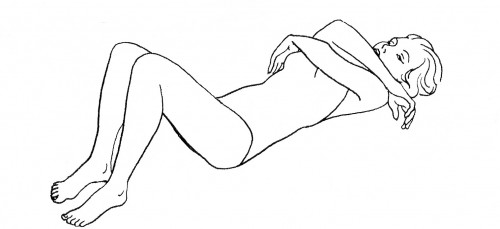The Yoga Pantry

I love a well-stocked pantry. It makes me feel safe. I'm not talking levels that might lead to participating in a reality show - just the basics, but with a definite flair. When I'm grocery shopping, I buy things that complement my foundation at home. A yoga practice should serve the same purpose. We practice when we're feeling calm. Then when we get anxious, agitated, or uncomfortable, we do a couple of specific things that we know will adress our current state. Because we've stocked our yoga pantry, we can efficiently bring ourselves back from the brink.
Constructive Rest Position is the equivalent of that can of tuna or black beans that are pantry must-haves.
I first learned Constructive Rest Position as a curious 25 year old dance student in New York City from Nancy Topf. She learned it from Barbara Clark, who was a student of Mabel Todd, author of "The Thinking Body" (1937). This pose is a body tonic. Lying on the floor with knees bent and feet hip distance apart, brings rest without collapsing (think opposite of curling up on the couch and getting up feeling stiff and worse than when you laid down) The floor provides a solid support and our bodies respond in kind. Place your feet in a way that relaxes the legs and hips as much as possible. Arms can be crossed over the chest or resting along your sides. If you remain in the pose for several minutes, the deep muscles connecting the legs to the back (psoas) will release and lengthen. This can effectively address whatever ails you structurally; low back pain, hip & knee pain, even neck issues, as the spine is brought into a supported neutral position.
The Mind-Body Connection:
Practice Constructive Rest Position when you want to cultivate a quality of quiet alertness. If you feel you're being pulled in all directions, it will help you to get grounded, settle back into yourself, and connect to the simplicity of body and breath.
The image above is from Dr Lulu Sweigard's book "Human Movement Potential." Learn more about this lineage of somatic innovators - some born in the late 1800s.
